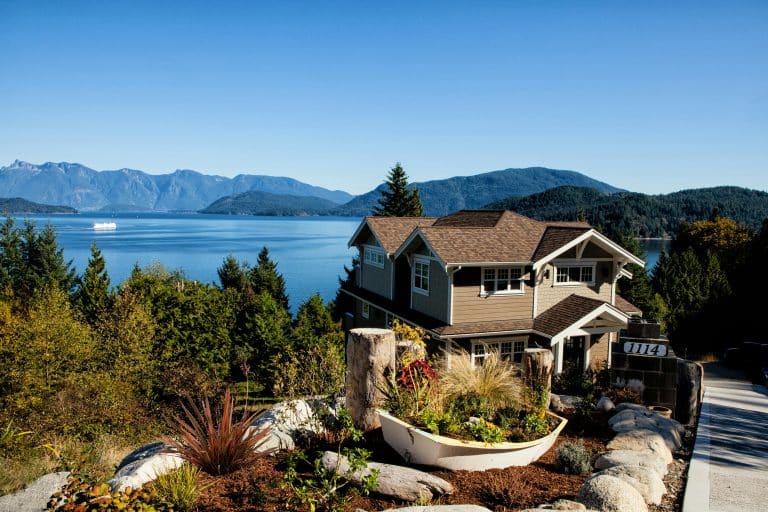For homeowners seeking a cost-effective and eco-friendly alternative to traditional air conditioning, evaporative coolers make for a smart summer solution.
In areas where the climate is typically dry, these appliances provide cool and fresh air by using the natural process of water evaporation. But are they just as effective in areas of high humidity, or on those occasional hot, humid days?
We’re here to explore the science behind evaporative cooling, examine the performance of an evaporative cooler under humid conditions, and offer practical tips for maximising efficiency. Ultimately, you’ll have a clear and informed understanding of whether an evaporative cooler is the right cooling solution for your home.
Evaporative Cooling 101
Known in some parts of the world as a swamp cooler, evaporative cooling systems provide a highly energy-efficient and cost-effective way to cool your home.
But how, exactly, do they work?
Evaporative coolers draw warm air through water-saturated pads. This causes the water to evaporate which then cools the air. This cooled air circulates throughout your home, providing a refreshing and natural form of air conditioning.
Unlike traditional air conditioning systems that use refrigerants and compressors, evaporative coolers rely solely on the evaporation process, making them more energy-efficient and eco-friendly. Ideally, they work best in dry climates where humidity levels are low so they can deliver effective and consistent cooling.
The Science Behind Humidity and Evaporative Cooling
Humidity measures the amount of water vapour in the air and plays a crucial role in the effectiveness of evaporative cooling.
Low humidity levels enable the air to absorb more moisture, enhancing the cooling effect. However, on hot, humid days, the air is already saturated with moisture, reducing its ability to absorb extra water and resulting in less cooling.
This relationship helps manage expectations and optimise the use of evaporative coolers. Considering local climate conditions is essential to ensure your system performs at its best. For instance, evaporative coolers are significantly more effective in drier regions like South Australia than in high-humidity states like Queensland.
Enhancing Evaporative Cooler Efficiency
We know that evaporative coolers aren’t particularly effective or efficient in humid conditions. However, if you want to improve the efficiency of your system, it’s well worth adopting a few practical strategies:
- Maximise ventilation in your home by opening windows and doors to allow fresh air to circulate and humid air to escape. This helps maintain the cooling effect by facilitating better evaporation.
- Regularly clean and replace the cooling pads to improve their performance, as dirty or worn-out pads can hinder the evaporation process.
- Use your evaporative cooler alongside additional cooling methods, such as fans or dehumidifiers, to help reduce indoor humidity and improve overall comfort.
- Place your cooler in a shaded area to prevent it from overheating and losing efficiency.
By taking these steps, you can enhance the cooling potential of your evaporative cooler, even on humid days.
The Importance of Regular Servicing
Regular servicing is crucial for maintaining the efficiency and longevity of your evaporative cooler.
Dust and mineral deposits can build up in the cooling pads and other components over time. This can reduce the effectiveness of your system and possibly cause damage. Basic maintenance tasks, such as cleaning the water tank, inspecting and replacing pads, and checking for leaks, are your best shot at keeping your cooler running smoothly. We also recommend scheduling servicing at least once a year to prevent breakdowns and improve overall air quality.
By keeping your evaporative cooler in top condition, you can enjoy consistent and efficient cooling, lower energy bills, and extend the lifespan of your unit. Regular servicing is essential for optimal performance, especially during the hottest months.
The Role of A Licensed HVAC Technician
Hiring a licensed Heating, Ventilation and Air Conditioning (HVAC) technician for your evaporative cooler installation, maintenance or repair is essential for ensuring compliance and best performance.
An HVAC specialist boasts the required expertise to identify and fix issues that might be overlooked during DIY maintenance. They can help by:
- performing thorough inspections
- cleaning and replacing cooling pads
- checking for leaks, and
- restoring maximum efficiency and functionality to your system
By booking an annual service with a licensed technician, you can prevent costly repairs and extend the lifespan of your cooler. Professional servicing also improves air quality and energy efficiency, making your home more comfortable.
A Suitable Alternative: Traditional Air Conditioning
For humid regions that may not enjoy the full benefits of evaporative cooling, a traditional air conditioning system offers a more effective cooling solution.
Instead of the natural process of evaporation, air conditioning systems use refrigerant gases to absorb and remove indoor heat. The use of refrigerants effectively cools and dehumidifies the air. Air conditioners provide consistent performance regardless of humidity levels, making them ideal for maintaining a comfortable indoor environment in muggier regions.
Though the initial cost of installing an AC system might be higher, advancements in energy-efficient technology can help to minimise overall running costs.
For reliable and efficient cooling in humid climates, traditional air conditioning remains the superior choice.
Maximise Your Cooling Comfort at Home
Evaporative coolers offer a cost-effective and eco-friendly cooling solution, especially in dry climates. But to circle back to our original question, their performance can rapidly diminish on hot, humid days due to the air’s limited capacity to absorb more moisture.
By understanding the limitations of evaporative cooling and putting strategies in place to enhance efficiency, you can still benefit from these coolers. Remember to schedule yearly maintenance to keep your system in peak working order. Consulting a licensed technician for professional maintenance further enhances your cooler’s effectiveness.
Overall, for regions that are typically prone to highly humid heat, a traditional air conditioning system that uses refrigerant will offer a more effective cooling solution. However, with the right approach and care, evaporative coolers may still provide a refreshing and efficient way to stay cool, even in challenging weather conditions.









